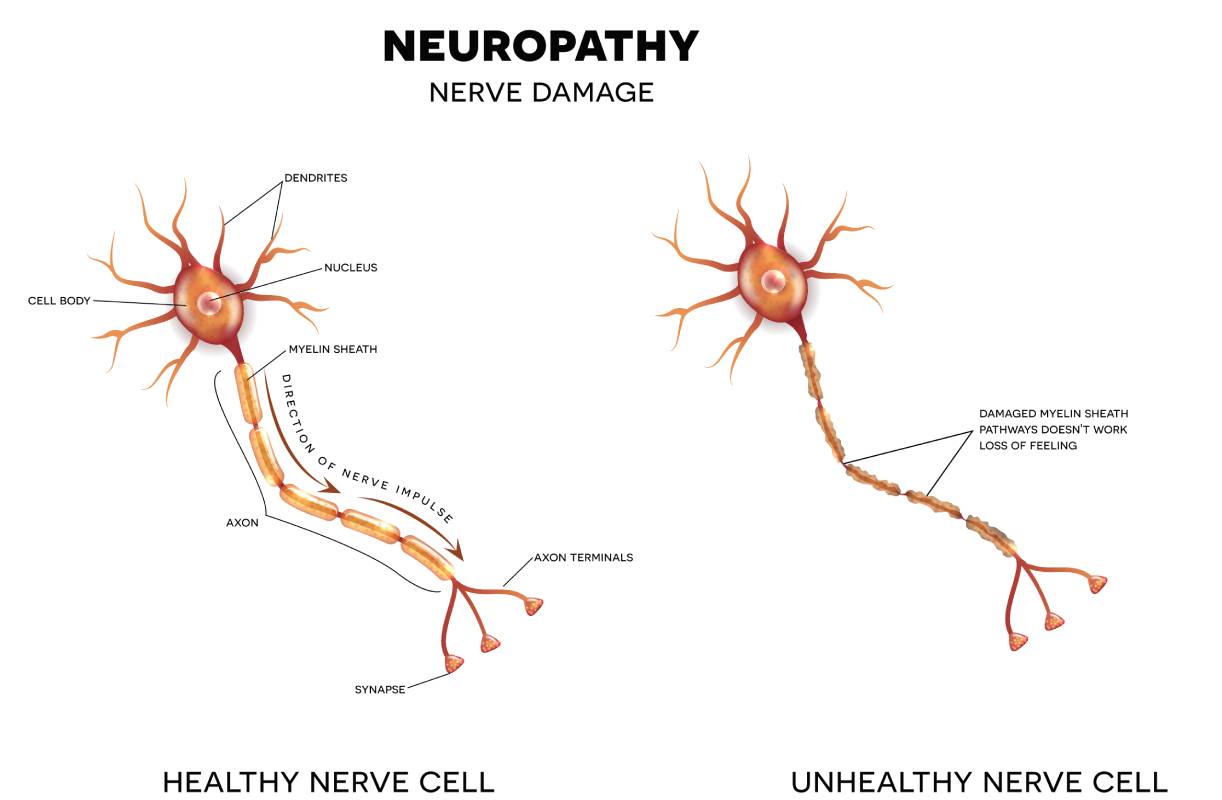Diabetic neuropathy is one of the most common long-term complications of diabetes, affecting nearly half of all diabetic individuals. It is nerve damage caused by high blood sugar levels and can lead to pain and/or numbness in affected areas. However, patients with diabetic neuropathy often have different symptoms, pattern of nerve changes, risk, and underlying mechanisms [1]. No single treatment currently exists to prevent or reduce neuropathic changes. While effective treatments for painful diabetic neuropathy are available, many have side effects, and few studies have shed light on the effects of different treatments on individual function or quality of life. This said, certain treatment guidelines have emerged based on the severity of diabetic neuropathy.
The treatment of painful diabetic neuropathy includes glycemic control, symptomatic pain management, risk factor management, and the targeting of any underlying pathogenetic mechanisms, each of which may be incorporated into a treatment plan based on the patient’s symptoms and disease severity. Treatment goals are three-fold. First, they aim to slow the progression of diabetic neuropathy (ideally, maintaining blood sugar levels between 80 and 130 mg/dL prior to meals, and under 180 mg/dL two hours following meals). Second, they seek to minimize pain. Third, they aim to manage any associated complications and eventually restore function [2]. This includes curing any urinary tract problems, digestive issues, low blood pressure, and/or sexual dysfunction [2].
A systematic review of the 1960 to 2008 research literature examined published recommendations and strength of evidence for those recommendations [3].
First, there was very strong evidence (level A in the American Academy of Neurology classification system) establishing that pregabalin was effective and should be offered for relief of painful diabetic neuropathy.
Second, there was fairly strong evidence (level B [4]) that venlafaxine, duloxetine, amitriptyline, gabapentin, valproate, opioids (including tramadol, oxycodone, and morphine sulfate), and capsaicin were probably effective and should be considered in the treatment of painful diabetic neuropathy.
Furthermore, some proposed treatments have pointed to the benefits of α-lipoic acid (which quenches reactive oxygen species formation), benfotiamine (which prevents vascular damage in diabetes), and aldose-reductase inhibitors (which minimize polyol pathway activity) [5].
A number of agents remain potential candidates for future use in painful diabetic neuropathy therapy. These include NaV1.7 antagonists, N-type calcium channel blockers, angiotensin II type 2 receptor antagonists, and nerve growth factor [5]. Other suggested treatments are supported by less robust evidence.
Lifestyle and home remedies may also help patients feel better overall. These include keeping one’s blood pressure under control, making healthy food choices, remaining active every day, and not smoking [2].
It is important to adhere to empirically based guidelines in the treatment of diabetic neuropathy, even though criteria are likely to evolve based on new developments in the field. Specific additional studies remain necessary in order to assess the most potent drugs or combinations of drugs for the treatment of diabetic neuropathy, with the goals of maximizing pain relief and improve quality of life. Different patients with diabetic neuropathy may need different treatment based on their specific condition, considering symptoms, severity, and more.
References
1. Tesfaye, S. et al. Diabetic neuropathies: Update on definitions, diagnostic criteria, estimation of severity, and treatments. Diabetes Care (2010). doi:10.2337/dc10-1303
2. Diabetic neuropathy – Diagnosis and treatment – Mayo Clinic. Available at: https://www.mayoclinic.org/diseases-conditions/diabetic-neuropathy/diagnosis-treatment/drc-20371587. (Accessed: 29th September 2022)
3. Bril, V. et al. Evidence-based Guideline: Treatment of Painful Diabetic Neuropathy. PM&R (2011). doi:10.1016/j.pmrj.2011.03.008
4. EBM: Levels of Evidence – Essential Evidence Plus. Available at: https://www.essentialevidenceplus.com/product/ebm_loe.cfm?show=grade. (Accessed: 5th October 2022)
5. Javed, S., Petropoulos, I. N., Alam, U. & Malik, R. A. Treatment of painful diabetic neuropathy. Therapeutic Advances in Chronic Disease (2015). doi:10.1177/2040622314552071
